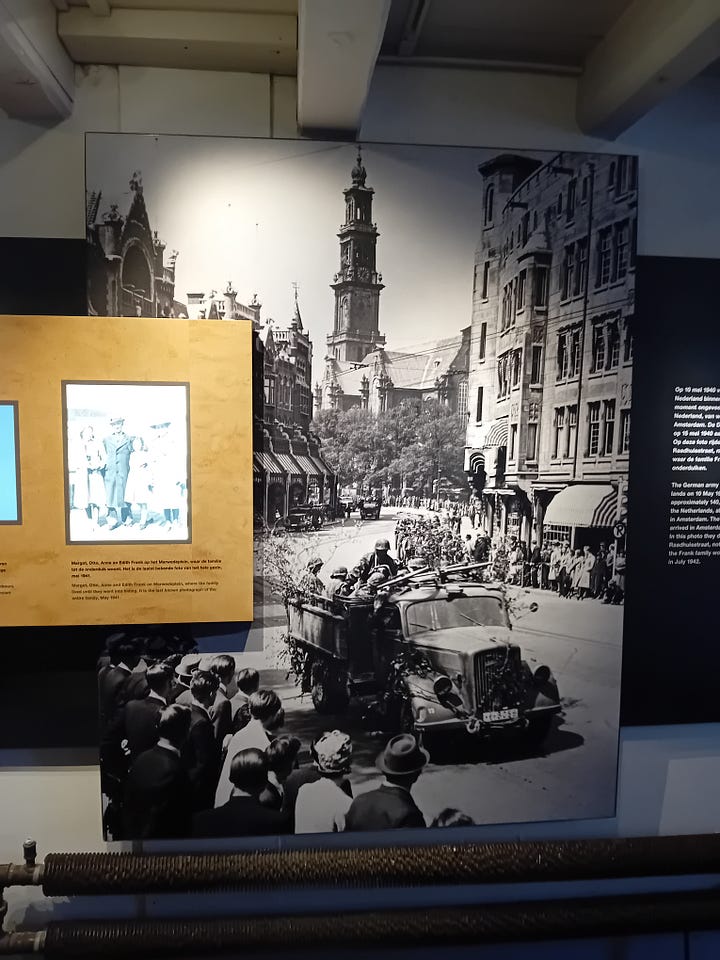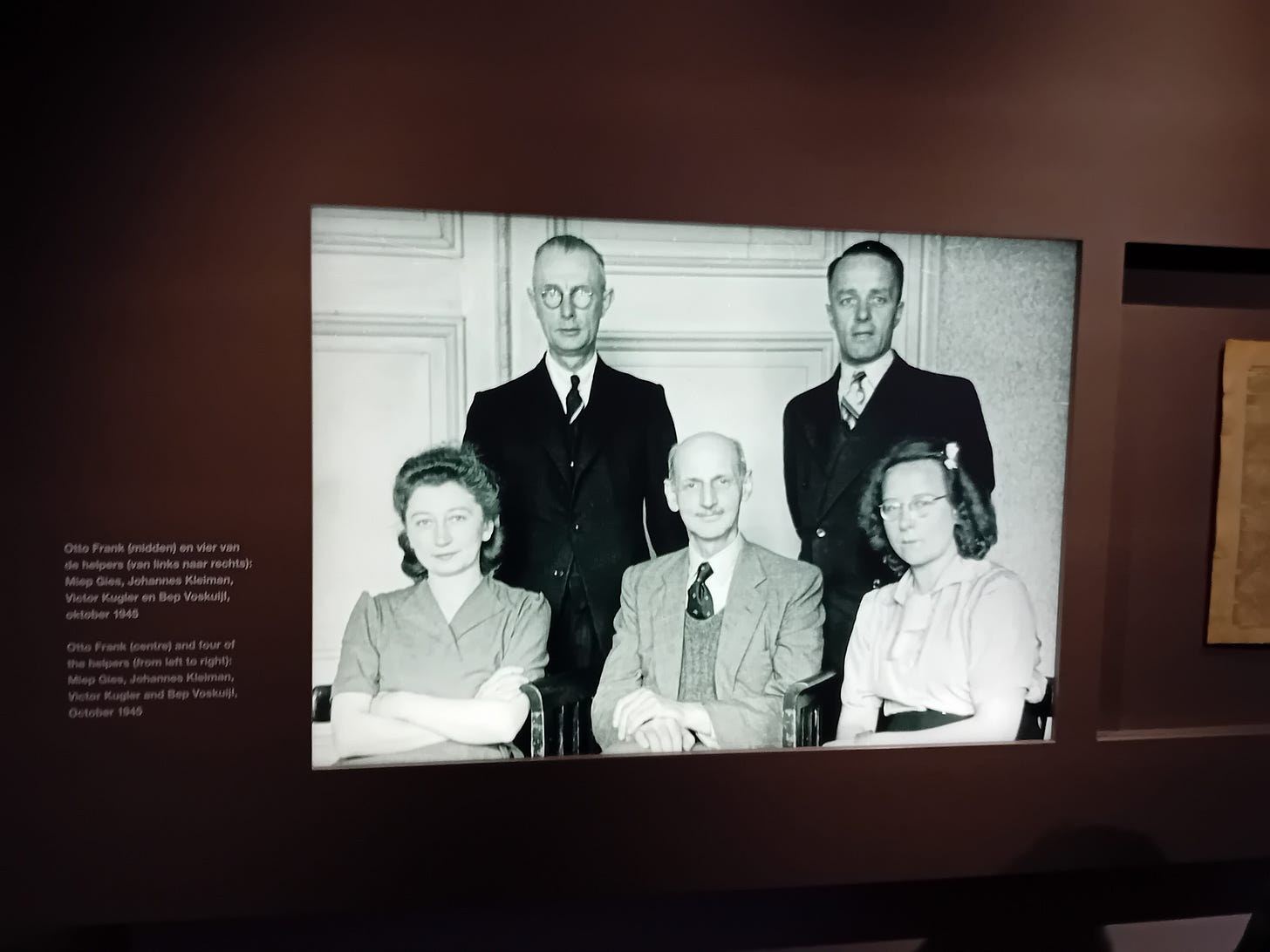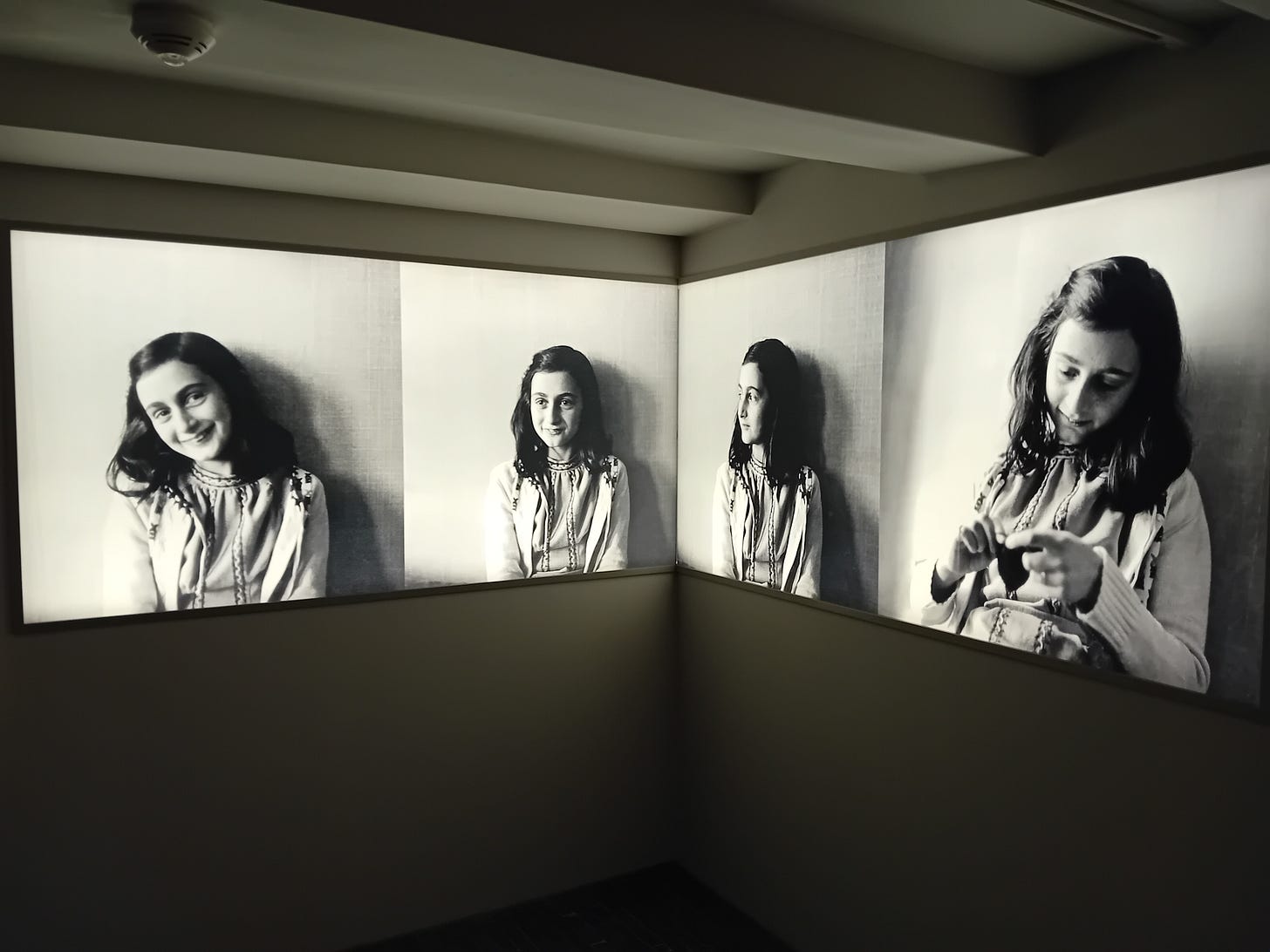Visiting the Anne Frank House: A Journey Through Sorrow and Hope
The Power of Memory and the Human Spirit in the Face of Persecution
Welcome to Vintage Cafe, a reader-supported newsletter where curiosity meets passion. Here, I explore music, films, books, travel, coffee, and art, sharing stories with a community that values depth and creativity. By becoming a paid subscriber for $5, you support this creative endeavor and gain access to exclusive content, early updates, and a closer connection to Vintage Cafe. Your contribution helps keep this space thriving, ensuring these passions continue to be shared with you and others who appreciate them.
Visiting the Anne Frank House in Amsterdam was one of the most moving and haunting experiences I have ever had. The story of Anne Frank is well-known across the world: a young Jewish girl forced into hiding with her family during the brutal years of Nazi occupation. Yet, no amount of preparation—no documentary or book—can quite capture the heart-wrenching feeling of walking through the actual rooms where she lived and wrote her famous diary.
I had read The Diary of Anne Frank as a teenager. But to stand in the very rooms where Anne, her family, and the others hidden in the Secret Annex lived, to touch the space that had once been their entire world for more than two years, made the story feel deeply personal. The house is a place of sorrow, but it’s also one of remembrance and reflection on the horrors of war and the persecution of Jewish people during the Holocaust.


Anne Frank and her family were actually refugees. This is something that tends to get lost in the broader narrative about her life, but it is a critical point. The Franks were Jewish refugees who fled from Germany to the Netherlands to escape Nazi persecution. Yet, even after fleeing, they couldn’t escape the reach of hate.
As I entered the house, I was immediately struck by the narrow staircases and the cramped quarters. It was difficult to imagine eight people confined to such a small space, never able to step outside, reliant on the kindness and bravery of the few who risked their own lives to help them. Anne Frank, her father Otto, her mother Edith, her sister Margot, the Van Pels family, and Fritz Pfeffer hid here from July 1942 until August 1944, when they were betrayed and arrested by the Nazis. Only Otto Frank survived.

Keep reading with a 7-day free trial
Subscribe to Vintage Cafe to keep reading this post and get 7 days of free access to the full post archives.





